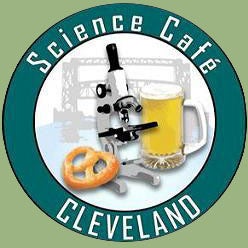Science Café Cleveland presents:
Powering the International Space Station for 20 Years
February 10, 2020
FEATURING:
David McKissock & Spencer Furin
NASA Glenn Research Center
EVENT INFORMATION:
The result of multinational collaboration, the International Space Station (ISS) is one of humankind's greatest projects, demonstrating what we are capable of when humanity works together. At an average altitude of about 250 miles and orbital speeds of about 17,500mph (much faster than that of a fired bullet), the ISS orbits Earth every 90 minutes. That means the crew onboard experiences 16 spectacular sunrises every 24 hours!
Countless experiments have been conducted in the zero-gravity environment, expanding our knowledge in many scientific fields. If you're lucky, for a few short minutes you can see the glint of the ISS' solar panels as it zips silently across the pre-dawn or post-dusk sky. As the ISS reliably flies over our heads every 90 minutes, it's easy to forget the extraordinary efforts that went into making this science-lab-in-the-sky a success. One of the critical components for achieving mission success is the ISS' power system.
The first US-contributed components of the International Space Station's (ISS) electrical power system (EPS) were launched on the Space Shuttle mission STS-97 and installed on the ISS in December, 2000. Two months earlier, the Expedition One crew began what is now nearly two decades of continuous human presence in low-Earth orbit. Since 2000, the ISS EPS capability has been expanded by adding three additional power generation and storage modules. More recently, older nickel-hydrogen batteries onboard ISS have been replaced with lithium-ion batteries.
Come join us as David Mckissock, who has worked on the ISS EPS program throughout his career at the NASA Glenn Research Center, will discuss the initial design and development of the ISS EPS, the challenges in assembling and operating the on-orbit EPS. Also hear from Spencer Furin, another Glenn power expert, who will talk about NASA’s future plans for space power systems to return to the moon by 2024!
LINKS OF INTEREST:
This month's speaker has recommended the following links for further exploration of the topic:
The International Space Station | NASA.gov
Sustaining Engineering of EPS Hardware | NASA Glenn Research Center
SPACE Software Tool | NASA Glenn Research Center
EVENT DETAILS:
WHERE:
The Music Box Supper Club - Concert Hall
1148 Main Avenue
Cleveland, Ohio 44113
WHEN:
February 10, 2020
Doors will be open 5:30–9:00 pm (last call at 8:45pm). Presentation and discussion is from 7:00–8:00pm. The Concert Hall will also host a limited menu before and during the event, not to mention a full bar! (Click here to view menu). Come early, get a good seat, grab a bite and a beverage, and enjoy the discussion!
WHO:
Sponsored by Case Western Reserve University chapter of Sigma Xi, WCPN ideastream, and the Music Box Supper Club.







